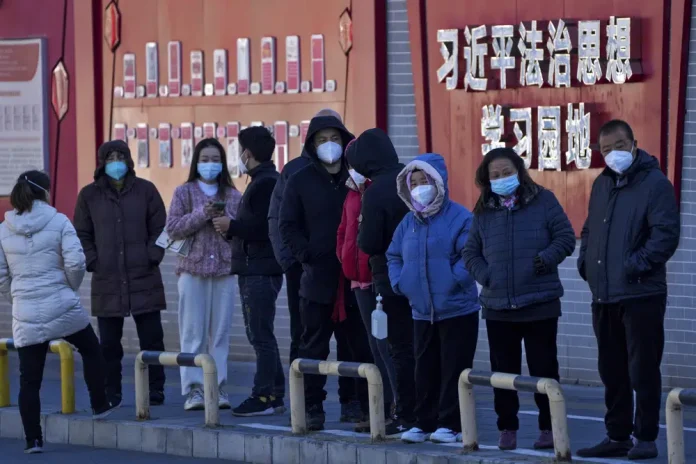The government last week announced plans to vaccinate millions of people in their 70s and 80s.
This raised hopes for a quick end to “zero COVID”. But health experts and economists warn that it will take from mid-2023 to possibly 2024 before vaccination coverage is high enough to prepare hospitals for possible outbreaks. I’m here.
Morgan Stanley economists said in a report on Monday that “China is not yet ready for a rapid reopening. “We expect continued containment measures.
The changes follow protests calling for an end to “no coronavirus”, but are in line with earlier promises by the Communist Party to reduce disruption by easing quarantines and other restrictions. The change was publicly announced to quell public outrage, but it was not indicated whether it was made in response to protests in Shanghai or other cities.
China remains the only major country still trying to eradicate the epidemic, while the United States and others are easing restrictions and trying to coexist with a virus that has killed at least 6.6 million people and infected nearly 650 million.
The protests began on November 11th. At least 10 people have died in a home fire in northwestern Urumqi. Officials denied firefighters or victims were blocked by locked doors or other antivirus controls. However, the disaster has become the focus of public discontent.
Ahead of the protests, the Communist Party vowed to make “zero COVID” cheaper and more destructive, but said it was sticking to its overall containment strategy.
The Communist Party had previously announced updates to its more focused strategy. Authorities have begun blocking access to infected buildings and neighborhoods, rather than entire cities. But a surge in cases since October has forced schools to close in areas across China and forced families to be confined to cramped apartments for weeks.
Authorities say they are “further optimizing” regulations and warn the country must remain vigilant.
China faces “new conditions and challenges” due to the “weakening of virulence” of its latest Omicron variant, said Sun Chunlan, deputy prime minister in charge of antivirus campaigns. said last week. She said China has “effective diagnosis and treatment” and vaccinates more than 90% of its population. advertisement
The government of Shanghai, the country’s financial capital, has announced that most website visitors must have tested negative for the virus in the past week, not the past two days. Schools, hospitals and pubs require you to be tested within the last 48 hours.
Despite the changes, Beijing and other cities have asked some residents to stay home and imposed other restrictions in areas with infections.
Travelers visiting the Chinese capital’s railway station and his three airports must show a negative virus test result within the last 48 hours. Elsewhere, Guangzhou and other cities have said they are still facing additional restrictions, especially in areas considered at risk of infection. The sluggish economy, which is already feeling pressure from weaker Chinese export demand and the government’s crackdown on debt in the property sector, could contract this quarter, forecasts show.






